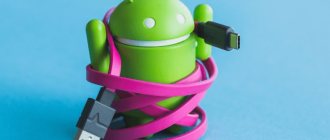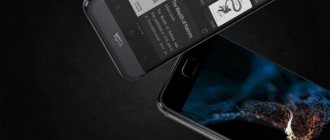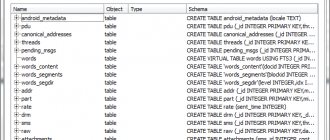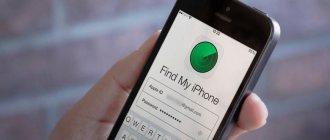Mobile devices have long become a familiar part of our everyday life. An integral working part of such gadgets is the battery. In most cases, its service life is less than the operating life of the device itself, and the battery is not that cheap. On the Internet you can find a lot of tips on how to preserve your battery for as long as possible. Some of the information is useful advice, and some is established myths. In order for the battery to last a long time, you must be able to separate truth from fiction, as well as follow simple rules.
At what percentage is it better to charge
Nowadays, mobile devices almost always use lithium-ion (as well as lithium-polymer) batteries. Their main advantages:
- high energy density - no element of another type with the same dimensions will have the same capacity;
- low tendency to self-discharge;
- Higher single cell voltage – three times higher than NiCd or NiMH batteries.
The main advantage of Li-Ion elements on the topic under consideration is the virtual absence of memory effect. If the battery is not completely discharged before replenishing the energy reserve, this does not cause any effects (the remaining level is not stored as zero). Therefore, a lithium-ion battery can be charged at any percentage of the remaining charge level.
Li-Ion battery for laptop.
Part 3. How to choose a phone charger?
Today, when choosing chargers, there is such a choice that you don’t know which is best to take. But in fact, it’s still simpler here than with the charging process itself. Today, fortunately, the days when each phone was charged through its own charger and when each phone had its own connector are gone. Today, the micro usb standard dominates, which is successfully replacing the newer USB Type-C. But the connector doesn't really play any role in choosing the charger itself.
The first thing you should pay attention to is that the output current should not be lower than 2.1 A. Why not lower than 2.1 A? What is this parameter and what does it affect? Briefly and generally speaking, while the gadget is charging. On the device, the output current can be marked as “output” or “output”; the numbers indicated next to it indicate how much current the charger is capable of transmitting. To charge a smartphone, a current of at least 0.7 A is usually required. For a high-capacity tablet battery, about 2 A.
Very often you can hear the question, on the “native” charger the current is indicated, for example, 1A, what will happen if I connect the charger to 2A? Will your phone burn out? No, all modern smartphones are equipped with the power controller already mentioned repeatedly above, which does not take more than the smartphone requires. But if the phone can “use” this current, the gadget will charge faster. So it definitely won’t be worse, and perhaps even better.
In a nutshell, I would like to say about charging from a computer. Many people often charge their gadgets jn PC. Is it correct? Actually, yes and no. Those. If we are talking about charging small gadgets such as watches or simple old phones, then there are no problems at all. But if we are talking about top-end smartphones, tablets and other “heavy” devices, then everything is not so simple. At the time of development of these ports, it could not even be imagined that they might require a charging function. And that’s why their output current is only 0.5A. Now compare it to 2-3A charging tablet? Therefore, when you try to charge your brand new tablet, you put a huge load on the computer's motherboard.
Using your phone while charging
In order to understand the processes that occur when using the phone while replenishing energy, you need to imagine a classic swimming pool with two pipes. Water flows through one pipe - this is the charging current. On the other hand, it flows out. This is the discharge current. More precisely, there are many leaking pipes - these are various consumers of the gadget, each of which, during operation, discharges the battery of the mobile phone to a greater or lesser extent:
- CPU;
- GPS module;
- display;
- Wi-Fi module;
- other consumers.
If more water flows into a pool than flows out, the water level rises. And the faster, the smaller the volume of flowing water. If the instantaneous flow exceeds the instantaneous replenishment, the level will decrease. The same thing happens with the battery.
Playing on the phone while replenishing energy delays the process.
If the current consumed by the energy-intensive elements of the smartphone at the same time is high, then the charging speed decreases. If consumption exceeds replenishment, then instead of charging the battery, it will be discharged. This can be clearly seen in special applications for battery monitoring. One of the most popular is AccuBattery for Android OS (similar programs also exist for Apple gadgets). On the “Charging” tab you can see the amount of charging current.
Screenshot of the “charging” tab of the AccuBattery application.
On the Discharge tab, the application shows the discharge current. There you can also find various consumption statistics for various applications. You need to understand that the applications themselves do not consume power. It is consumed by the processor, display and peripheral modules of the phone when various programs are running, and the more resources the application uses, the faster it drains the battery. So, game programs are very energy-intensive in this regard . They load the processor and make full use of the display. In many cases, modern entertainment applications also require Bluetooth, Wi-Fi, etc. modules. If you play during the charge replenishment process, you can actually reach a mode where consumption exceeds replenishment.
Screenshot of the “Discharge” tab.
Hence the conclusion - if you use the phone while charging, you need to be prepared to slow down the rate of energy replenishment, and if the charger is low-current, then to drain the battery. Such actions will not damage the battery.
Part 2. Briefly about how to charge your phone.
So what do we have in the end? Let's derive the rules for charging a mobile phone from all of the above:
- Don't overcharge. If the phone remains on charge for a long time at 100% charge, this harms the battery.
- Full discharge is no less harmful. Do not allow the battery to become completely discharged. Place your phone on charge at about 20%.
- Once every month or two, carry out a full discharge/charge cycle to calibrate the phone’s charge sensor.
- Do not charge with short charges. It is better to charge normally once than 10 times at 8%.
That's all! If you see a small charge, charge it, and when finished, turn it off. Simple, right? 
And further. On the Internet, I often saw advice that a newly purchased phone should be charged either overnight or for 12 hours... I would like to ask, why do this if the phone turns off charging when it reaches 100%? Therefore, we’ll talk separately about the first charging of the phone .
At first, I would advise you to drop only the purchased phone to zero. It's not difficult to do. While you download the applications, while you get acquainted with the functionality, while you insist, the battery is gone. Then charge it to 100%. If you carefully read the publication, I think you should guess why to do this. It is advisable to do this not for battery operation, but in order to calibrate the charge sensor. In principle, the same procedure can be repeated a second time if desired, although it is not necessary. That’s all, after which you can start using your phone normally, taking into account all the rules written above.
Tips for extending battery life
You can extend the battery life by using it properly. And the first piece of advice is to prevent it from overheating, which can occur, for example, when the phone is placed near heating devices or in direct sunlight. The second thing that will help extend the battery life is to prevent it from being deeply discharged. When the minimum level is reached, the controller built into the phone will turn off the gadget , but that's all it can do. Then self-discharge will come into play. If a battery is stored for a long time without replenishing its energy supply, it can eventually become deeply discharged (although lithium-ion batteries have a low self-discharge rate). After this, restoring the functionality of the element will be problematic or even impossible.
Another tip is to use fast charging mode as little as possible. Why – more on that below.
But all actions are good in moderation - there is no point in taking the desire to preserve battery life to the point of fanaticism. The fact is that lithium-ion batteries degrade on their own over time, regardless of how they are used, so all these precautions are effective to a certain extent.
How to speed up smartphone charging
It is better not to abuse Quick Charge, but to use it in extreme cases
Nowadays fast charging is especially popular. When using Quick Charge, powerful impulses are sent to the battery. Thanks to them, recharging time is reduced. But this method has an important drawback: the battery overheats greatly, which accelerates its wear and tear.
To properly charge your smartphone, you cannot use fast charging by default. And the problem is not just excessive heat.
The device recharges extremely unevenly. Most quickly the level reaches 50-70%. The remaining part takes twice as long. Users often charge the gadget only halfway, which harms the battery.
It is better not to abuse Quick Charge, but to use it in extreme cases. When there is no rush, you should prefer a standard charger. It is not advisable to purchase budget options and alternative adapters that support the technology in question.
Popular questions “Myth or not”
There are many myths surrounding the process of charging batteries. With the development of the Internet, their number began to grow like a snowball, and it became very difficult to distinguish truth from fiction.
Is it possible to charge a smartphone overnight?
Can. This myth most likely was born in an era when phones had nothing superfluous, and the process of recharging had to be controlled manually. In modern devices, the energy reserve level is monitored by the phone's internal controller, and when it reaches 100%, the charging process stops. The current consumed from the charger drops sharply, but not to zero. A certain amount of power from an external source continues to be consumed, but it is spent on maintaining the functions of the phone - it is powered from the network (in whole or in part), and not from the battery. And the phone switches to power completely from the battery after disconnecting from the network. Therefore, charging all night will not harm the battery.
When the battery is fully charged, the phone continues to draw current from the AC adapter.
Is it possible to charge a phone to 100 percent?
The myth that you can’t charge your phone to 100% is partially discussed above. Other arguments against this mode are that when fully charged, the battery life is reduced, and that this parameter can be fooled by keeping the energy reserve level between 20% and 80%.
Charging to almost 100%.
Those who advocate this method of using batteries do not provide anything in support - neither descriptions of chemical processes, nor references to reliable test results, nor their own statistics. Logic speaks against this approach - yes, the charging process is reduced in time, but the phone will have to be charged more often to maintain the level. No one has yet proven which will outweigh in the end. Therefore, the benefit of using the battery in this way is very doubtful , but there will be no harm either. Except for the inconvenience associated with the fact that a not fully charged phone will require more frequent charging and may fail at the wrong time.
Can I charge it often?
This myth is the opposite of the previous one. For older types of batteries, frequent charging is usually associated with incomplete charge and discharge. The memory effect killed the battery capacity. For modern smartphones, you can replenish energy from any level to any, although you must be aware that any charging consumes the resource of battery cycles.
Can I charge in power saving mode?
The origins of the myth that charging in energy-saving mode is harmful cannot be traced or calculated. Because there is no logic here at all. This mode is characterized by the fact that it disables smartphone functions, most of which are not of primary importance. These include, for example, a voice assistant. Also, depending on the operating system version, the screen brightness may change, automatic software updates may be disabled, and other similar actions may be performed. For the charging process in the pool model, this means disconnecting several flow pipes. This will cause the container to fill faster. It’s the same with a battery - with the same charging current, it will be saturated with energy in a shorter time. There are no other differences between the energy saving mode and the normal mode.
List of actions in power supply mode.
Is it possible to use a more powerful or “non-native” memory?
The myth that you can’t use “non-native” memory is beneficial to phone manufacturers. This marketing technique allows you to increase prices for cheap components several times over. In fact, the battery does not know who made the energy source. For him, only two parameters are important:
- charger voltage;
- charge current.
If these two parameters match, then the charger is suitable for charging the phone battery. If the output voltage is below the nominal value, then the required charging current will not occur, and the process may take a long time. If the charger level is lower than the battery voltage, then instead of the process of energy renewal, a discharge will occur.
Why are voltage surges dangerous?
Voltage surges are very dangerous for smartphones and their batteries
In fact, in legal practice there is no such thing as a “jump” or “difference” in voltage. There are only so-called deviations in the quality of supplied electricity from the requirements of regulatory documentation. But, be that as it may, the damage that power surges cause to electronic devices is not covered by the warranty and is generally not subject to free repair. That is why it is extremely important to follow simple safety precautions.
Subscribe to our channel in Yandex.Zen to read exclusive materials every day that are not on the site.
If you first insert the cable into the charging socket and plug it into a power outlet and the surge is strong, it may damage the smartphone. It is impossible to track surges in advance, because they are impulsive in nature and appear simultaneously, which, however, does not prevent them from causing harm to electronics. Moreover, the degree of damage can be very different - from a decrease in battery life, which you won’t even notice, to physical damage to the microcircuits.
A quarter of smartphone owners miss removable batteries. Why?
What happens if the surge occurs after connecting the smartphone to the outlet? In fact, nothing good either. But since the power supply is already connected to the mains, the load will not be so strong. Why is this happening?
Imagine touching an electrified sweater. The moment you touch it, you get an electric shock. However, if you leave your hand on it without lifting it, you will no longer be shocked. The same thing happens with the connected power supply.











